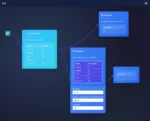
by tyler garrett | May 13, 2025 | Data Processing
Big data holds incredible promise for businesses seeking deep, transformative insights and strategic advantages. Yet, alongside massive potential comes significant complexity. Too frequently, teams adopt problematic data processing patterns—design decisions and operational shortcuts that initially save time but quickly evolve into critical bottlenecks. Recognizing these anti-patterns early, and developing effective refactoring strategies, empowers organizations to unlock genuine value. A proactive approach to identifying and overcoming data pitfalls ensures smoother operations, improved efficiency, and strengthens your competitive edge going forward.
Understanding Big Data Anti-Patterns
An anti-pattern is essentially a common solution or practice that seems effective on the surface, but in reality, leads to unintended inefficiencies, complexities, and costs. In the domain of big data processing, these anti-patterns frequently emerge from quick-fix mentalities, limited foresight, or inadequate team collaboration. Businesses eager to see immediate returns on their data investments often unwittingly embrace these shortcuts, jeopardizing future results and scaling capabilities.
For instance, teams often cling to legacy infrastructures or traditional spreadsheet solutions like Excel long after they’ve outgrown these tools. Transitioning from Excel to data warehousing is critical—check out our detailed guide on how to smoothly evolve beyond Excel workflows. Identifying anti-patterns early requires open team communication and knowledge sharing, which is why structured strategies like targeted working sessions, can help proactively prevent miscommunication and clarify project goals effectively.
Common Big Data Processing Anti-Patterns
Over-Reliance on Monolithic Systems
One particularly costly anti-pattern in big data processing is the over-reliance on monolithic architectures. Monolithic systems initially seem simpler, as everything lives in a single environment. Yet, as your data grows exponentially, these setups reveal their limitations—downtime becomes prolonged, resource allocation inflexible, and updates arduous. This severely hampers your team’s agility, making it difficult to rapidly adapt your data strategy to evolving business requirements or innovations in the data space.
To effectively break away from this anti-pattern, adopting modular, distributed systems can significantly mitigate many of these issues. Embracing structured data engineering tailored for the size and complexity of your team can help manage these changes effectively—our comprehensive guide on data engineering practices for small teams outlines how smaller groups can achieve impactful, modular data solutions. By refactoring towards accessible, modularized structures, teams improve resilience, reduce downtime risk, and dramatically enhance agility and innovation potential.
Ignoring Data Quality and Integrity
Overlooking data quality is another harmful anti-pattern. Companies often invest heavily in big data technologies, such as data lakes or large-scale warehousing solutions, without simultaneously creating stringent data validation and cleaning protocols. Poor data quality leads to misleading analytical outcomes, misguided strategic decisions, and erosion of trust in analytics across your business.
To address data quality challenges, it’s crucial to establish concrete and automated validation processes from data ingestion through processing workflows. Growth-focused engineering teams should integrate data quality measurement into their regular practices, alongside clear monitoring and metrics for proactive governance. A powerful methodology to monitor your data pipelines’ health is tracking essential performance and reliability metrics—often called golden signals for data pipelines. Incorporating these key signals equips your team to rapidly detect and correct quality issues early, thereby substantially increasing data trust and reducing the downstream costs associated with remediation and correction.
Tight Coupling of Data Pipelines and Code
Another persistent anti-pattern occurs when data processing codebases and data pipeline configurations are tightly coupled. This tightly coupled design limits flexibility, as code and pipelines must be modified simultaneously—even for small and incremental adjustments. Over time, the prolonged cycles of these parallel modifications delay development, negatively impacting your analytics capabilities and causing friction across data analyst and engineering teams.
Instead, you can optimize flexibility significantly by decoupling data pipeline logic from the core code. Clearly separating business logic from pipeline configurations helps enforce single responsibility principles, reducing errors, improving scalability, and simplifying management of analytics workflows. As your data initiatives mature, consider transitioning toward more robust and flexible solutions—evaluate options with informed analysis published in our guide that provides insights through a comparison of open-source versus commercial ETL solutions. Such improvements empower teams to iterate quickly, ensuring pipeline configurations adapt independently to code deployments based purely on business and operational needs rather than technical dependencies.
Best Practices and Refactoring Strategies
Implementing Data Observability and Monitoring
Effectively refactoring big data anti-patterns requires visibility into the operational health of your data ecosystems. Implementing strong observability protocols empowers your team to proactively uncover subtle hidden problems, enhancing reliability, efficiency, and trust. This kind of visibility is especially critical as your data infrastructure grows and analytics workloads expand.
By embedding solid monitoring systems for golden signals such as latency, throughput, errors, and saturation—the four key metrics commonly tracked—you’ll gain real-time clarity of your data systems’ behavior. Dive deeper into how these metrics significantly improve operational performance in our in-depth guide on golden signals for data pipelines. Proactively monitoring these valuable indicators will enable agile decision-making and maintain optimized performance, preemptively preventing performance degradation and unexpected downtimes.
Migrating to Effective Data Warehousing Solutions
Refactoring involves continuously adapting and improving your data processing architectures. Many companies struggle with the limitations of legacy or informal analytics approaches rooted in Excel or desktop applications, limiting scale and sophisticated analytics potential. As your data complexity increases, transitioning to structured data warehousing environments yields powerful analytical advantages.
Adopting robust, flexible warehousing solutions significantly enhances data accuracy, collaboration, reliability, and the pace of analytical delivery. Understand more clearly by learning from our practical development resource on transitioning smoothly from reliance on Excel to modern data warehousing strategies. This strategic transformation positions your organization to capitalize on scalable, performant analytics, dramatically outperforming cumbersome legacy workflows.
Strengthening Team Collaboration and Communication
Often overlooked as merely soft skills within technical teams, communication and collaboration directly impact your analytics maturity and efficiency. Poor team alignment perpetuates technical anti-patterns, reducing project velocity and inhibiting innovation. Dedicated sessions designed specifically to facilitate clear, shared understanding—notably, structured analytics working sessions—can dramatically reduce miscommunications and improve cross-team clarity.
Additionally, regularly sharing expertise between data engineers, analysts, and business stakeholders builds cohesive understanding and collaborative problem-solving. Proactively facilitating this cross-pollination strengthens innovation capabilities and cultivates alignment around strategic analytics initiatives. This enhancement in team communication concurrently aids in the rapid identification and removal of emerging or persistent anti-patterns, greatly accelerating your team’s analytical effectiveness and resilience.
Looking Toward an Informed, Innovative Future
Refactoring your big data challenges proactively positions your organization for sustained competitive gains in a rapidly evolving digital landscape. Staying informed about anticipated trends—explored thoroughly in our resource predicting key industry shifts in the future of data over the next five years—will equip your team to optimize current performance while preparing strategically for tomorrow’s opportunities.
As experienced data strategists dedicated to pushing analytical and data engineering excellence, we can support your journey. Our comprehensive data visualization consulting services and tailored solutions offer forward-thinking organizations effective ways to capitalize on their evolving data landscapes, anticipate challenges smartly, and navigate confidently toward innovation.

by tyler garrett | May 13, 2025 | Data Processing
In today’s hyper-connected digital ecosystem, effective data sharing across pipelines fuels innovation, accelerates decision-making, and drives competitive advantage. Enterprises that master the capability of seamlessly exchanging data between various analytical systems and business processes thrive with agility, deeper insights, and resilient operations. However, navigating the diverse landscape of exchange patterns and data formats can pose challenges. As recognized leaders in data consulting, we understand that a strategic approach to cross-pipeline data sharing—choosing the right patterns, formats, and mastering technical intricacies—allows visionary leaders to harness the power of their data assets, build collaborative analytics pipelines, and drive sustainable innovation. Let’s explore how different data exchange patterns and formats can empower your analytics capabilities and streamline operations, bringing strategic clarity and practical guidance to your organization’s digital journey.
Understanding the Importance of Cross-Pipeline Data Sharing
Modern enterprises operate within ecosystems interconnected by diverse data pipelines. Cross-pipeline data sharing enhances collaboration, accelerates decision cycles, and enables organizations to respond effectively to market dynamics. By exchanging data across analytical pipelines and business processes, companies improve the quality, timeliness, and depth of their analytics, ultimately enhancing strategic agility and insight quality. For example, leveraging streamlined production planning based on timely data exchanges ensures manufacturing aligns precisely with anticipated demand, increasing operational efficiency and customer satisfaction.
Data sharing isn’t about simply transferring data—rather, it involves aligning technology, people, and processes into an integrated analytical landscape. Organizations must carefully determine appropriate patterns, formats, and strategies that optimize cross-team collaboration, rapid access to analytics, and adaptive responses to changing business environments. Establishing effective data exchange pipelines also positions organizations to harness powerful data technologies and analytics platforms, maximizing the value of consultative solutions such as advanced Tableau consulting services and specialized visualization practices, which ensure analytics insights are clearly communicated and actionable.
Recognizing the importance of data sharing positions your organization to curate well-governed datasets, improve regulatory compliance, maintain consistency of information across departments, and reduce duplicate data generation. Leveraging effective strategies and patterns simplifies interoperability across different analytical systems and operational applications fostering organizational-wide collaboration and knowledge sharing.
Exploring Common Data Exchange Patterns
Request-Response Pattern
This traditional exchange pattern involves one application requesting information while another responds, making it ideal for synchronous interactions. Systems built to leverage real-time analytics commonly utilize the request-response pattern, especially when immediate feedback is necessary to drive critical decisions. For instance, data analytics platforms can implement this pattern effectively to enhance progressive data loading for responsive user interfaces, enriching user experience through instant responses based on users’ actions or input data.
Event-Based (Asynchronous) Pattern
An event-based approach, such as publish-subscribe (pub/sub), ensures seamless communications across applications where asynchronous or streaming events occur frequently. Applications publish data topics to message brokers; subscribers consume messages without immediate dependencies or constraints. Event-driven architectures excel in scenarios demanding reliable performance and scalability, particularly in analytics processes addressing complex temporal patterns. To harness the event-based pattern effectively, organizations must master strategies for out-of-order event processing, building robust analytics systems resilient to message delays, latency variations, or data sequencing complexities.
Batch Processing Pattern
Batch patterns involve scheduled aggregation of large volumes of data into sizeable chunks consumed periodically. They fit well with scenarios where processing efficiency is prioritized over instantaneous insights. Common in many data warehousing scenarios, batch patterns facilitate comprehensive reporting, historical trend analysis, and resource optimization, aligning well with organization-wide analytical frameworks. Implementing powerful analytical frameworks leveraging batch exchanges enhances capabilities around forecasting, predictive analytics, and historical data assessments within your organization’s analytics ecosystem.
Selecting the Right Data Formats for Effective Communication
JSON (JavaScript Object Notation)
JSON offers simple yet flexible data representation, making it ideal for web-based API exchanges and lightweight transaction communications. Its popularity stems from human-readability, broad language support, and excellent suitability for rapid prototyping and agile development methodologies. JSON aligns extremely well with real-time data streaming architectures, particularly those leveraging JavaScript frameworks like Node.js. Enterprises aspiring to optimize their event-driven analytics pipelines, as described in our article on real-time data processing with Node.js, should strongly consider JSON since it efficiently integrates with fast asynchronous operations, ensuring minimal overhead and reduced latency.
XML (Extensible Markup Language)
XML has a rich history and usage in establishing standardized communications across diverse technological ecosystems. Offering structure, robust validation through schemas, industry-wide standardizations (SOAP-based messaging, for example), and inherent extensibility, XML serves well in highly regulated industries or enterprise collaborations with external partners. XML’s self-descriptive nature enhances collaboration in scenarios requiring strong data conformity or validation against extensive external schemas, providing controlled flexibility while enforcing consistency across multiple pipelines.
Parquet and Avro (Columnar Data Formats)
Formats such as Parquet and Avro have emerged as powerful solutions in handling complex analytical datasets—especially in environments optimized for batch processing, distributed compute frameworks like Apache Spark, and data warehouse storage optimization. Organizations adopting modern big data analytics ecosystems will deeply benefit from these formats’ capability of efficient compression, storage optimization, and significantly faster query performance on structured data. These formats seamlessly address challenges highlighted in our guide around visualizing higher-dimensional data efficiently, enabling organizations to perform scalable and performant analytics on massive and complex datasets.
Addressing Common Data Sharing Challenges
Data Quality & Consistency Issues
Data exchanges spanning multiple pipelines bring forth inevitable quality and consistency issues. Implementing comprehensive fuzzy entity resolution techniques for master data management plays a significant role in resolving these potential challenges. This practice ensures accuracy, avoids duplication, and maintains data integrity throughout cross-functional communications, thus ensuring analytics outcomes remain valid and trustworthy across organizational silos.
Data Security & Governance
Exchanging data securely and in compliance with regulatory guidelines presents challenges across organizations. Implementing comprehensive data governance regimes, defining clear roles and access responsibilities, and enforcing rigorous security policies is paramount when coordinating cross-team data sharing. Robust and secure data sharing models help protect sensitive analytics data, fostering internal trust and supporting sustainable enterprise-wide data democratization efforts.
Ensuring data governance and security ultimately empowers effective analytics strategies by providing confidence, enabling managed self-service analytics, and supporting regulatory compliance across analytics teams.
Establishing Strategic Data Exchange Capabilities
Strategically implementing cross-pipeline data sharing requires careful planning, governance excellence, skilled talent, and robust analytics and integration platforms. Leveraging best practices from our comprehensive guide on strategies to implement within your organization, professional consultants and expert resources empower enterprises to establish robust exchange patterns strategically. Addressing business context, defining clear exchange formats, and adopting agile, industry-proven methodologies ensures smooth and efficient data sharing across business process landscapes and analytical pipelines.
Building robust integration practices, investing in advanced analytics expertise, and aligning your organization’s data architecture strategically fosters a powerful analytics-driven capability. Realizing transformative advantages requires proactively planning your organization’s data sharing strategies and aligning practical best practices that solidly ground your cross-pipeline data sharing in sustainable and executable analytical excellence.
Ultimately, visionary leadership combined with strategic consulting expertise empowers businesses to revolutionize operational agility and analytical capability, establishing internal data economies driving superior insights, collaborative innovations, and sustainable competitive advantage.

by tyler garrett | May 13, 2025 | Data Processing
In the rapidly evolving landscape of modern business analytics, decision-makers continually face the critical need to configure, manage, and adapt complex data transformation workflows. As organizations accelerate digital transformations, the data pipeline becomes more than merely a technical necessity—it’s the central nervous system guiding strategic business operations. Implementing business rules engines within your data transformation logic can significantly enhance agility, transparency, and maintainability, ultimately bridging the gap between technical requirements and strategic business objectives. Organizations ready to harness data-driven decision-making must look closely at their existing data processing frameworks to integrate comprehensive, rule-driven approaches to stay competitive in today’s innovation-driven marketplace.
Understanding Business Rules Engines and Their Strategic Value
A business rules engine (BRE) is a software platform that manages rapid configuration, execution, and maintenance of complex decision logic separately from core application code. This abstraction fosters agility and promotes clarity—enabling business stakeholders to directly modify or oversee rules without needing extensive technical involvement. A rules engine consistently calculates, evaluates, and applies these rules across data transformations, effectively turning sophisticated business logic into repeatable and predictable processes.
Incorporating a business rules engine into your data transformation logic achieves a critical organizational advantage: aligning technology with rapidly evolving business requirements. For instance, in data-intensive sectors such as financial services, e-commerce, or healthcare, companies frequently adjust business logic to accommodate changing regulations, markets, or business strategies. Rather than redeploying new code for every scenario change—which consumes precious development hours and leaves systems susceptible to integration errors—teams can utilize BREs to rapidly adapt logic through configurable variables and conditions.
Another compelling advantage is transparency. Stakeholders across different departments often require visibility and confidence that data transformations correctly implement business rules. BREs offer intuitive, accessible user interfaces and visual representations of rules, facilitating that direct visibility. This allows non-technical team members to directly participate or validate critical data workflows, significantly reducing reliance on scarce IT resources and creating transparency between technical experts and business decision-makers.
Enhanced Operational Efficiency Through Centralized Logic Management
Businesses increasingly recognize that centralized management of data transformation logic brings pivotal operational efficiencies. By moving decision-making logic away from bespoke software approaches and into a centralized rules engine, organizations streamline data processes and reduce duplication. This approach also reduces the risks of code discrepancy, making teams less prone to errors stemming from inconsistent interpretations or implementations of business rules.
Traditionally, handling ETL (Extract, Transform, Load) workflows in legacy custom code presents difficulties when adapting business logic frequently. By integrating BREs, organizations quickly pivot from rigid ETL methods toward flexible, visually manageable ELT methodologies ideal for modern analytics architectures. As demonstrated in our analysis of real use cases where ELT outperformed ETL, adopting adaptable and centralized logic management increases agility and scalability in response to changes, market dynamics, or operational realities.
Managing data transformations through rules engines further supports isomorphic data processing capabilities, meaning that logic can seamlessly transition or share across client-side and server-side processing environments. Our exploration of isomorphic data processing highlights the efficiency and performance gains achievable when identical decision logic is leveraged across multiple data consumption channels. Thus, BREs not only optimize transformation logic management centrally but also strengthen consistency, governance, and control over analytics processes, thus providing strategic value from end-to-end within enterprise data pipelines.
Strengthening Data Quality and Governance with Business Rules Engines
At the heart of effective data analytics is quality assurance. Trustworthy and insightful analytics fundamentally require high-quality, well-governed data. Business rules engines inherently bring rigorous contributions to data quality standards, streamlining data verification and validation during transformation. By explicitly defining, documenting, and enforcing rules that govern data quality roads, organizations identify and mitigate data inaccuracies, inconsistencies, and compliance issues in real-time and en masse.
Furthermore, utilizing a BRE encourages a disciplined, collaborative approach—known as data-contract-driven development. Such contracts foster a strong alignment between teams regarding data processes, expectations, quality requirements, and compliance constraints. BREs effectively visualize and codify these contracts and proactively enforce adherence, minimizing costly downstream data remediation efforts.
Implementing business rules engines also directly strengthens data governance, compliance, and traceability—particularly crucial for heavily regulated industries. A properly-developed rules engine architecture provides audit trails and traceable pathways, enabling organizations to meet increasingly sophisticated regulatory demands transparently and systematically. Consequently, stakeholders benefit significantly from the enhanced transparency, auditability, and real-time governance integration a BRE provides, resulting in more trusted, reliable, and actionable analytics insights.
Leveraging Business Rules Engines to Boost Analytics ROI
The true measure of effective technology implementation ultimately comes down to financial results. Organizations investing in BRE technologies realize substantial return on investment (ROI) by streamlining daily operational processes and significantly accelerating business intelligence and reporting deliverables. Replacing manually-coded transformations with readily manageable rule-based decisions considerably reduces maintenance overhead and shortens time-to-market for analytics delivery.
Additionally, BRE integration directly contributes to the optimized use of reporting software solutions and SaaS platforms. Optimized transformation logic powered by robust rules engines allows organizations to achieve higher performance and enhanced flexibility along with substantial reductions in technical debt, improving the sustainability of advanced analytics initiatives. Learn more about maximizing your reporting investments in our in-depth article about improving ROI on reporting SaaS software.
Moreover, organizations leveraging an extensive rules-based approach encourage self-service analytics capabilities, enabling business users to create effective, engaging visualizations confidently. Rules-driven logic helps govern the data effectively displayed in visual analytics tools, creating efficient workflows and accurate insight delivery. For leaders interested in strengthening reporting and data visualization capabilities, our comprehensive guide on effective and visually appealing data visualizations offers strategic insights to leverage BRE in visual analytics workflows effectively.
Assessing Organizational Readiness and Choosing Your BRE Solution
As with any innovative technology, the decision to adopt a business rules engine must be approached strategically, ensuring your organization’s current technical maturity, data workflows, and team capabilities support the successful embrace of a BRE. Leveraging an evaluation tool such as our DataOps maturity assessment can identify potential integration points, highlight areas for improvement, and establish strategic roadmaps to manage anticipated changes effectively.
When selecting your BRE solution, consider factors such as ease-of-use, accessibility for business users, integration capabilities with existing infrastructure, scalability, and marketplace reputation. Exploring comparative research on data visualization techniques and vendor landscapes can spotlight BRE solutions accommodating your specific needs, organizational dynamics, financial limitations, and strategic goals. Effective preparation and due diligence before BRE implementation ensures your enterprise benefits fully from the agility, transparency, and scalability promised by business rules engines.
Aligning technology strategies directly with business goals is paramount in today’s competitive market. Successfully implementing business rules engines in your data transformation logic positions your organization not merely for efficient operations but sustained strategic innovation and measurable competitive advantage.

by tyler garrett | May 13, 2025 | Data Processing
Modern data infrastructures thrive on agility and precision; today’s organizations cannot afford one-size-fits-all data pipeline solutions. Cutting-edge data-driven businesses rely heavily on tailored pipeline configuration management—one that is meticulously tuned to each distinct environment. Whether development, testing, staging, or production, each stage warrants specialized attention to details that impact scalability, reliability, and security. As seasoned data strategists guiding innovative businesses into sophisticated analytics, we’ve witnessed the transformative power of environment-specific settings first-hand. Let’s delve deep into why adopting meticulous pipeline configuration strategies is more than just a best practice—it’s a prerequisite for future-proofing your organization’s data ecosystem and maximizing your analytic prowess.
Understanding Environment-Specific Configuration Management
Data-driven systems today live in multifaceted ecosystems, demanding distinct environments for development, testing, staging, and production. Configuration management, when done correctly, provides an efficient, structured approach to maintaining these variations. Far beyond merely altering database connection strings, environment-specific configuration management involves awareness and comprehensive documentation of settings that control data processing, extraction frequencies, security restrictions, and resource allocation.
To build robust pipelines, first understand your organizational benchmarks. Knowing exactly which questions to ask before coding is crucial. Without clear demarcations, inefficient or incompatible configurations can lead to data duplication, security breaches, resource limitations, or catastrophic pipeline failures. However, delineating each environment clearly—and automating the transition between each stage—ensures data quality, system performance, and ultimately bolsters organizational confidence.
For instance, your production pipeline demands stringent security guidelines and stricter access permissions. Conversely, a development or test environment offers developers more flexibility, room for experimentation, and rapid innovation without the risk of compromising critical system data. Segmenting these configuration layers not only ensures smoother transitions from development to production but also lets teams experiment safely, pushing the innovation envelope with the safety net of reliable, repeatable configuration management.
Critical Components to Include in Your Pipeline Configuration Strategy
Database Connections and Environment-Dependent Settings
Adjusting database configurations appropriately per environment is fundamental. Incorrectly set database connection strings or credentials can introduce unnecessary complications, including downtime or security vulnerabilities. Consider the critical role of managing complex joins effectively—this is especially evident in initiatives such as demystifying the FROM clause in SQL. Understanding these details allows engineers to handle database configurations effectively across varied environments.
Proactively accounting for differences at each stage—such as single-node versus multi-node database clusters or transient versus persistent storage—mitigates unwelcome surprises in performance or availability as your data moves from testing to deployment. Leveraging dynamic configuration techniques ensures both accuracy and consistency across environments. Implementing a central configuration manager or environment-specific configuration files, protocol strategies, or Infrastructure as Code (IaC) practices provides a robust framework to streamline this process efficiently.
Logging and Alerting- Tailored for Environment Visibility
Different environments carry distinct logging and alerting requirements. The granularity of logging should align logically with the environment; verbose, debugging-style logs may dominate a development or testing environment, whereas production logging tends to focus on high-severity issues or abnormalities that impact critical business pathways.
Thoughtfully handled alarms and monitoring strategies promote proactive management of the analytics stack, bridging critical visibility gaps. Such visibility is particularly valuable for tracking performance metrics, understanding bottlenecks, or validating functionality across distinct stages. An agile analytics organization proactively tailors logging granularity, ensuring it contributes meaningfully rather than becoming a mere noise generator.
Leveraging Environment-Specific Settings for Enhanced Security
Recognizing the diverse security requirements across different environments is central to data pipeline configuration. In development and testing stages, infrastructure may operate under flexible restrictions to allow thorough troubleshooting and exploration. However, as you transition pipelines to production, stricter requirements become paramount.
Sophisticated organizations utilize stringent roles, permissions, and encryption standards at the production level—allowing for regulated access to sensitive or personally identifiable information. A well-configured data pipeline ecosystem aligns environment-specific settings with robust data protection techniques such as encryption at rest, stringent resource permissions, and proper role-based access controls. This methodology safeguards data assets from unauthorized access or leakage at each pipeline stage.
Adhering to best practices often involves incorporating temporal data techniques within pipelines. Implementing temporal tables and querying data through time creates historical accuracy and context-based security—a cornerstone of a robust data protection strategy.
Optimizing Performance Through Tailored Configuration
Achieving optimal performance in each pipeline environment requires a nuanced approach to resource allocation, schedule configuration, and load handling. Staging and production often carry divergent capacity and usage requirements compared to development or testing environments. Leading-edge organizations align pipeline scaling strategies with specific resource environments, ensuring performance remains reliably consistent regardless of data volume or complexity.
Differentiating how data is loaded and transformed per environment also impacts performance significantly. Organizations adept in modern data workflows appreciate real-world scenarios: adopting an ELT-driven strategy over traditional ETL methods often results in speedier processing times and reduced latency. Dev3lop’s expert analysis of real use cases where ELT outperformed ETL demonstrates clearly the importance of tailoring transformation strategies by environment.
Additionally, consider the benefits of specialized monitoring and smart alerting systems that promptly detect performance deviations or latency problems before they impact end users. Strategic implementation of these preventative measures greatly enhances pipeline reliability and ensures a consistent end-user data experience.
Real-world Pipeline Configuration Use Cases to Consider
Social Media Data Integration Pipelines
Effectively integrating external data feeds, such as social media platforms, into analytics workflows is heavily impacted by environment-specific nuances. Take, for example, the ability to reliably send Instagram data to Google BigQuery—a critical capability for data analytics teams analyzing real-time brand sentiment or marketing metrics. Differentiated pipeline configuration settings significantly streamline workflows, separating the more experimental development environment from tightly controlled and secure production systems.
Harnessing Analytics to Measure Brand Sentiment Across Channels
Tailoring pipeline configurations by environment is essential when using analytics to measure brand sentiment across multiple channels. In production settings, high frequency and accuracy are required, ensuring real-time business insights. Conversely, in development stages, pipelines can tolerate variability, granting teams space to experiment freely without impacting operational analytics.
Non-Profit-focused Data Pipelines
Non-profit organizations, requiring careful management to leverage resources optimally, also greatly benefit from environment-specific pipeline configurations. Custom pipeline architectures designed specifically for nonprofits streamline workflows by optimizing resource allocation, analytics precision, and data governance—illustrated by targeted business intelligence initiatives for nonprofits. Proper adaptations across pipeline environments amplify analytics’ impact, driving deeper insight and enhanced mission effectiveness.
Conclusion: Strategic Insight, Stronger Pipelines
In today’s analytics landscape, effectively managing pipeline configuration complexities determines a project’s success. The richness offered by environment-specific configurations cannot be overstated. Properly delineated settings accelerate development cycles, improve analytics accuracy, enhance data security, and fortify performance across scenarios. From startups to seasoned enterprises, leveraging a structured, strategic approach to configuration management delivers immense value.
If managing your data pipelines across environments still seems daunting, consider collaborating with seasoned experts in data engineering consulting—guiding your transition into superior data governance, robust architectures, and impactful analytics.

by tyler garrett | May 13, 2025 | Data Processing
In a rapidly evolving digital landscape filled with insightful data opportunities and breakthroughs, maintaining accuracy and consistency in your data warehouses and analytics-driven tools has become mission-critical. Businesses that leverage industry-leading data management practices, such as the powerful Slowly Changing Dimensions (SCD) methodologies, are better positioned to gain tangible competitive advantages. Let’s explore Type 1, Type 2, Type 3, and Type 4 SCD implementations in modern data systems, clarify their distinctive characteristics, and learn how adopting them can lead to trustworthy analytics, streamlined operations, and more informed business decisions. Throughout this journey, you’ll discover precisely how a seasoned data engineering consulting service can guide you toward effective implementation strategies, tailored specifically to your organization’s needs and business goals.
Understanding Slowly Changing Dimensions (SCD)
In data warehousing, dimensions are attributes that provide context to numerical measures, such as geographical location, customer demographics, or product categories. Over time, dimension values inevitabley evolve—customers move locations, products are modified, or companies rebrand. Slowly Changing Dimensions (SCD) are methodologies used to manage these changes systematically, enabling accurate analytical capabilities over your historical and current data.
Effectively handling SCD means avoiding inaccuracies that can negatively impact critical decisions. When decision-makers rely on analytics, reports, or dashboards built from inadequately managed dimension tables, the resulting insights become unreliable—leading to misguided strategies. Therefore, a profound comprehension of SCD’s implementation methods has become indispensable for modern businesses utilizing dynamic data environments.
Primarily, there are four recognized types: Type 1 SCD overwrites changes, Type 2 tracks historical data extensively, Type 3 maintains limited history with dedicated fields, and Type 4 uses separate history tables, each offering unique strengths tailored for different contexts and analytical goals. Utilizing a thoughtful blend of these methodologies can enhance your data credibility, empower data-driven decisions, and significantly increase your competitive positioning.
SCD Type 1: Overwriting Historical Changes
SCD Type 1 is traditionally considered the simplest approach of dealing with dimension changes. In Type 1 implementation, the new value completely replaces the old value, essentially overwriting any historical data. This tactic presents clear advantages, such as being easy to implement, saving database space, and streamlining queries due to its straightforward nature.
However, this implementation may not always be sufficient, especially in cases where tracking historical changes is crucial for trend analysis or decision-making that depends on past data perspectives. For instance, suppose your organization’s marketing team analyzes product price changes over time to better understand customer satisfaction and price sensitivity trends. Utilizing SCD Type 1 here would eliminate the historical price records, limiting analytical perspectives and strategic insights. In situations where historical data is essential, a different SCD type might serve your goals better.
If your business faces persistent operational or storage constraints, embracing Type 1 may be beneficial. It is also highly effective for dimensions that rarely change or whose historical data holds limited organizational value. Partnering with an experienced data engineering consultancy can help you clearly identify when a Type 1 SCD implementation truly meets your needs or when it might result in unintended data limitations impacting valuable analytical insights.
SCD Type 2: Preserving Complete Historical Insights
SCD Type 2 is characterized by preserving all historical records of dimension changes through logical record insertions rather than overwriting. This enables powerful time-based analytics scenarios, as you can seamlessly analyze data at specific points in history. Implementing Type 2 typically involves adding timestamps or active/inactive flags to differentiate current records from previous ones clearly. Thus, when customers update contact information or move locations, all previous entries remain intact for extensive trend analysis.
Consider a predictive maintenance scenario detailed in our article Predicting the Future of Maintenance. Preserving historical records helps data scientists establish patterns by accurately correlating past conditions or states with equipment downtimes, enhancing future predictions. Similarly, understanding a customer’s previous locations or purchasing habits through dimensions managed via Type 2 enables your internal analysts to glean invaluable insights, validating targeted marketing initiatives and personalized experiences.
However, the complexity of Type 2 cannot be overlooked. This implementation method can cause significant increases in storage requirements and query complexity compared to other types. Keeping extensive historical data calls for careful dimension model planning, database optimization, and adept resource management, highlighting the importance of expertly-guided implementations. Collaborating with an experienced firm that focuses on strategic data team structures ensures you maximize analytics capabilities without overwhelming your resources or sacrificing performance.
SCD Type 3: Capturing Select Historical Changes
SCD Type 3 provides a middle ground between Type 1 and Type 2 solutions. Instead of overwriting data entirely or preserving every single change, Type 3 captures limited, selective history through dedicated columns. Consider utilising Type 3 when only recent or limited historical changes provide relevant business insights. For example, in scenarios of evaluating previous versus current customer territory assignments, this methodology proves beneficial by capturing only necessary dimension snapshots rather than extensive histories.
Although SCD Type 3 reduces storage overhead compared to Type 2, the sacrifice in historical depth limits its scope and applicability. If your business needs substantial dimension history for advanced historical trend analysis or comprehensive audits, Type 3 has inherent limitations. Therefore, clearly defining your requirements upfront and critically evaluating the long-term analytical perspective becomes crucial.
Adopting a customized approach that fits your particular requirements is always recommended. Choosing between custom implementations versus standardized methodologies is discussed in-depth in our article Custom vs Off the Shelf. A well-rounded analysis is essential — knowing when specifically captured historical entries are sufficient and when broader historical contexts are needed ensures your SCD Type selection is strategically sound.
SCD Type 4: Creating Dedicated Historical Dimension Tables
SCD Type 4 involves separating your historical dimension data into dedicated history tables, while your main dimension tables contain only current data. Optimized for quick analysis and streamlined query performance, this advanced technique effectively balances operational speed with in-depth historical analysis capabilities.
A common use-case scenario occurs when handling extensive social media data integrations. For instance, dealing with frequent user data modifications like those detailed in our guides about integrating and managing Twitter data and Instagram data to BigQuery may benefit tremendously from Type 4 adoption. By strategically separating current user profile data and attributes with historical social media interaction data, organizations gain significant performance improvements paired with real-time contextual advantages and advanced predictive analyses capabilities.
However, with separate tables comes increased complexity around table management, integration, synchronization, and the necessity for highly robust database structuring and maintenance practices. To guarantee reliable and secure implementation with detailed documentation, robust data security best practices, and alignment with future growth, partnering with expert data professionals becomes vital to achieving streamlined operations and sustained success in your modern data systems.
Conclusion: Picking the Right SCD Implementation Strategy
In modern data analytics, your organization’s success generates significantly from intelligently handling dimensional data changes using the most suitable SCD methodologies. Effectively navigating implementation strategies across Type 1, 2, 3, and 4 scenarios directly impacts your overall decision-making clarity, operational effectiveness, and competitive strength.
A combination of understanding business needs deeply, effective dimension modeling practices, and engaging certified data engineers successfully positions your analytics initiative for long-term success. Keep in mind future industry changes—as detailed in our blog, The Role of Data Scientists Will Continue to Evolve, and remember SaaS subscription volatility addressed in The SaaS You Pick Yesterday Will be More Expensive Tomorrow. These considerations ensure flexible system adaptability, aligning to possible future shifts and innovations, effectively future-proofing your analytics solutions.
Ready to embark on strategizing your data structures effectively? Reach out to seasoned strategic data engineering experts today, and reap lasting benefits consistently exceeding your growth and innovation expectations.

by tyler garrett | May 13, 2025 | Data Processing
In today’s fast-paced digital landscape, your organization’s success often hinges on your ability to efficiently integrate data from diverse sources. One vital yet overlooked aspect of this integration process is dimension conformity enforcement. Dimension conformity ensures all data sources agree on common key values used in analytics and decision-making, placing this technical consideration squarely at the heart of your analytics strategy. Neglecting dimension conformity can cascade into costly misalignments, turning valuable insights into misguided directions. However, skilled enforcement of dimension conformity helps businesses seamlessly align data insights across the enterprise, accelerating analytics readiness, improving accuracy, and fostering innovation. If your enterprise seeks sustained competitive advantage through effective analytics and data integration, ensuring dimension conformity is an essential strategic step you can’t afford to overlook.
What is Dimension Conformity and Why Does It Matter?
Dimension conformity is a fundamental approach in data modeling and integration that ensures consistent use of key dimensions—such as date, customer, region, or product—across various sources and data repositories. When dimensions are conformed, stakeholders from different parts of your business can confidently use analytics knowing they speak from a single, unified voice. On the contrary, failing to enforce dimension conformity introduces ambiguity, disconnected reporting, and unreliable forecasts. Simply put, without conformity, you risk investing resources into analytics solutions that cause more confusion than clarity. To achieve robust dimension conformity, consider collaborating with experienced consultants who specialize in advanced data strategies, like those outlined in our data engineering consulting services.
Ensuring dimension conformity matters not just technically but also strategically. It facilitates comprehensive views of information, reliable performance measurements, and precise decision-making capabilities, directly impacting your company’s agility and growth. Whether you’re visualizing KPIs in Tableau—where understanding Tableau pricing structures can optimize your analytics investments—or managing XML data to leverage BigQuery (learn more from our article on how to send XML data to Google BigQuery using Node.js), dimension conformity ensures your organization’s analytics layer remains consistent, trustworthy, and actionable.
Challenges in Achieving Dimension Conformity in Data Integration
In traditional data integration projects, achieving dimension conformity can appear deceptively simple yet contains hidden complexities. Diverse data sources usually come with unique business rules, legacy systems, differing granularity, and vocabulary mismatches. Quickly identifying and resolving these differences is crucial to ensure analytics initiatives maintain momentum and authenticity. When organizations overlook such complications, they inadvertently construct barriers to effective analytics, leading to inconsistent reports and erroneous assumptions. Additionally, inconsistency in dimension conformity complicates debugging analytical errors, significantly raising correction costs.
For instance, comparing demand forecasts across multiple departments without enforcing dimension conformity would be problematic at best. As our article Meeting Customer Demands: The Power of Accurate Demand Forecasting highlights, precise forecasting is essential for inventory control, staffing, and revenue predictions. Without uniform dimensions, forecasting becomes guesswork rather than strategic insight. Moreover, troubleshooters chasing errors in improperly dimensioned analytics environments will often encounter challenging issues such as isolated analytics dashboards. If you find yourself struggling with flawed dashboards, explore our complementary read How to Kill a Dashboard Before It Kills Your Strategy.
Best Practices for Dimension Conformity Enforcement
Fortunately, dimension conformity isn’t something decision-makers must handle alone. Proven best practices can streamline consistent dimension enforcement across your analytics stack, saving time, resources, and mitigating risks associated with inaccurate analytics insights. The first step toward effective dimension conformity involves establishing integrated data governance principles. Your organization’s stakeholders, business analysts, and data engineers must clearly determine and document the standards and vocabularies used across all data systems.
Next, ensure effective data modeling techniques are fully embedded into every data integration project. Our resourceful article A Beginner’s Guide to Data Modeling for Analytics explains how robust data modeling eases integration challenges, significantly improving data analytics accuracy. By clearly defining conformed dimensions in a shared modeling approach, agreements simplify every subsequent integration project, greatly enhancing analytics stability and integrity.
Additionally, leverage powerful data engineering methodologies and proven technologies. Methods like zero-copy or minimized data movement integrations help keep conformity high and costs low, a topic explored further in our guide about Zero Copy Integrations: Minimizing Data Movement Costs. These approaches ensure accuracy, facilitate quick implementation, and reduce developmental complexity throughout the analytics environment.
The Strategic Benefits of Enforcing Dimension Conformity
Beyond analytics accuracy alone, strategic organizations recognize dimension conformity enforcement as a competitive differentiator. Properly enforced conformity opens transformative opportunities to reliably activate data-driven business practices, enabling richer, clearer, and more accurate decision-making processes at all business levels. Decision-makers aspiring towards making analytics central to their company’s roadmap must prioritize dimension conformity as a central strategic asset.
Consider the instance of enabling strategic, data-driven decision-making outlined in our valuable guide Enabling Data-Driven Decision Making in 2023. Dimension conformity aligns internal teams around universally understood analytics, allowing organizations to make swift, confident decisions rather than contending with conflicting reports arising from dimension ambiguity. Moreover, dimension conformity enforcement accelerates adoption of advanced business intelligence and analytics strategies. Users benefit from trustworthy analytics environments capable of rapidly iterating new analytic ideas, fueling innovation initiatives and yielding measurable returns on investment. Ultimately, businesses with robust dimension conformity are more nimble, proactive, and strategically informed competitors.
Practical Implementation: Technical Considerations and Tools
Achieving dimension conformity at scale necessitates alignment of technical practices with strategic objectives. In practical implementations, organizations benefit significantly from robust data platforms, carefully selected ETL tools, and clearly documented processes customized for your analytics requirements. Technically proficient data engineers understand critical SQL concepts such as efficient filtering—if you’re not comfortable with SQL techniques like the BETWEEN operator, our article outlining Mastering Range Filtering with the SQL BETWEEN Operator can prove invaluable.
Choosing mature cloud solutions and innovative data integration platforms can greatly streamline implementation and ongoing conformity enforcement. Employing professional analytics platforms, ETL automation frameworks, and scalable solutions ensures your data infrastructure remains agile, reliable, and scalable. Furthermore, maintaining meticulous documentation around dimension definitions and consistently employing automated testing and monitoring ensures continuous alignment and avoids conformity drift over the long-term.
Finally, ensure your dimension conformity implementation approach is adaptable enough to handle unexpected scenarios, such as sudden operational anomalies like Error 1084: This Service Cannot Be Started in Safe Mode, what our comprehensive article addresses. A sound implementation methodology anticipates potential operational roadblocks and ensures robust data workflows with built-in resiliency, usability, and scalability—ensuring dimension conformity remains firmly embedded into your analytical ecosystem’s DNA.
Conclusion: Dimension Conformity as a Strategic Necessity
Companies actively investing in dimension conformity enforcement will outpace competitors who treat analytics alignment as optional. By adopting conformity as a strategic analytics imperative, these organizations ensure consistent KPIs across departments, enabling accurate, actionable insights that accelerate decision-making and innovation. Technical proficiency combined with sound strategic implementation increases conformity effectiveness while significantly enhancing data strategy throughout the organization.
Dimension conformity is not merely a technical afterthought; it represents a core competitive advantage. Forward-thinking enterprises that strategically enforce dimension conformity establish themselves as analytics-driven leaders, empowering their teams to succeed, innovate, and thrive in an always-changing marketplace. For decision-makers ready to leverage dimension conformity strategically, consider partnering with seasoned data consultants and analytics strategists.
Tags: Dimension conformity, Data integration, Data engineering, Analytics strategy, Data modeling, Data-driven decision making






























